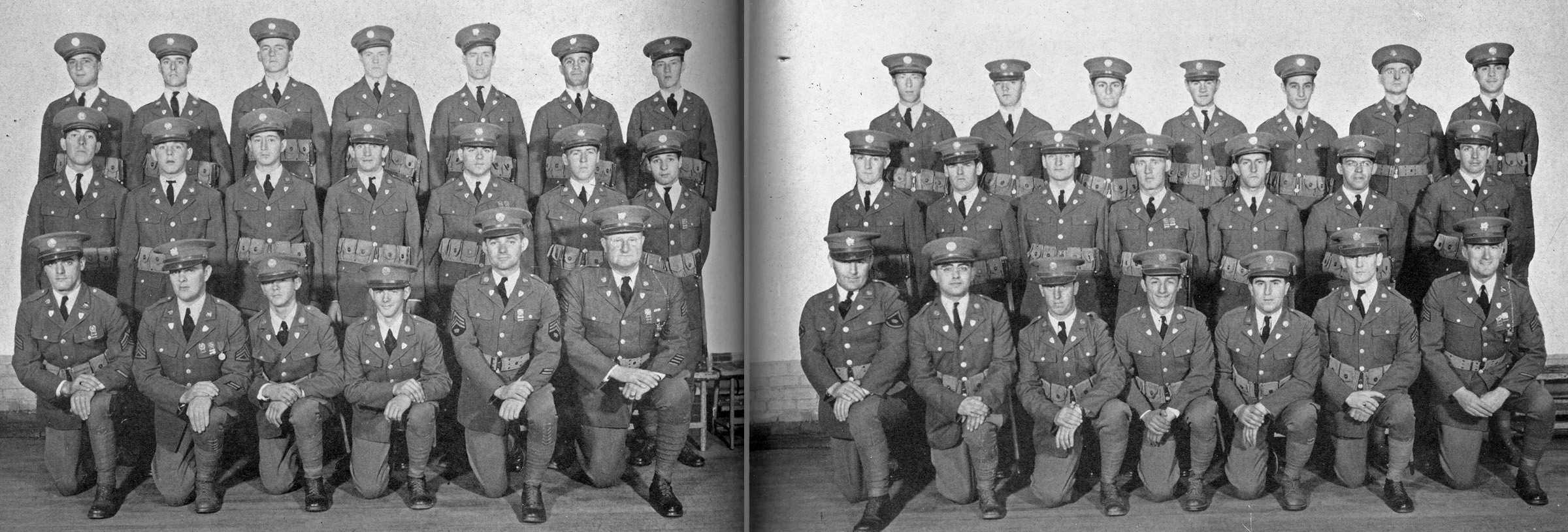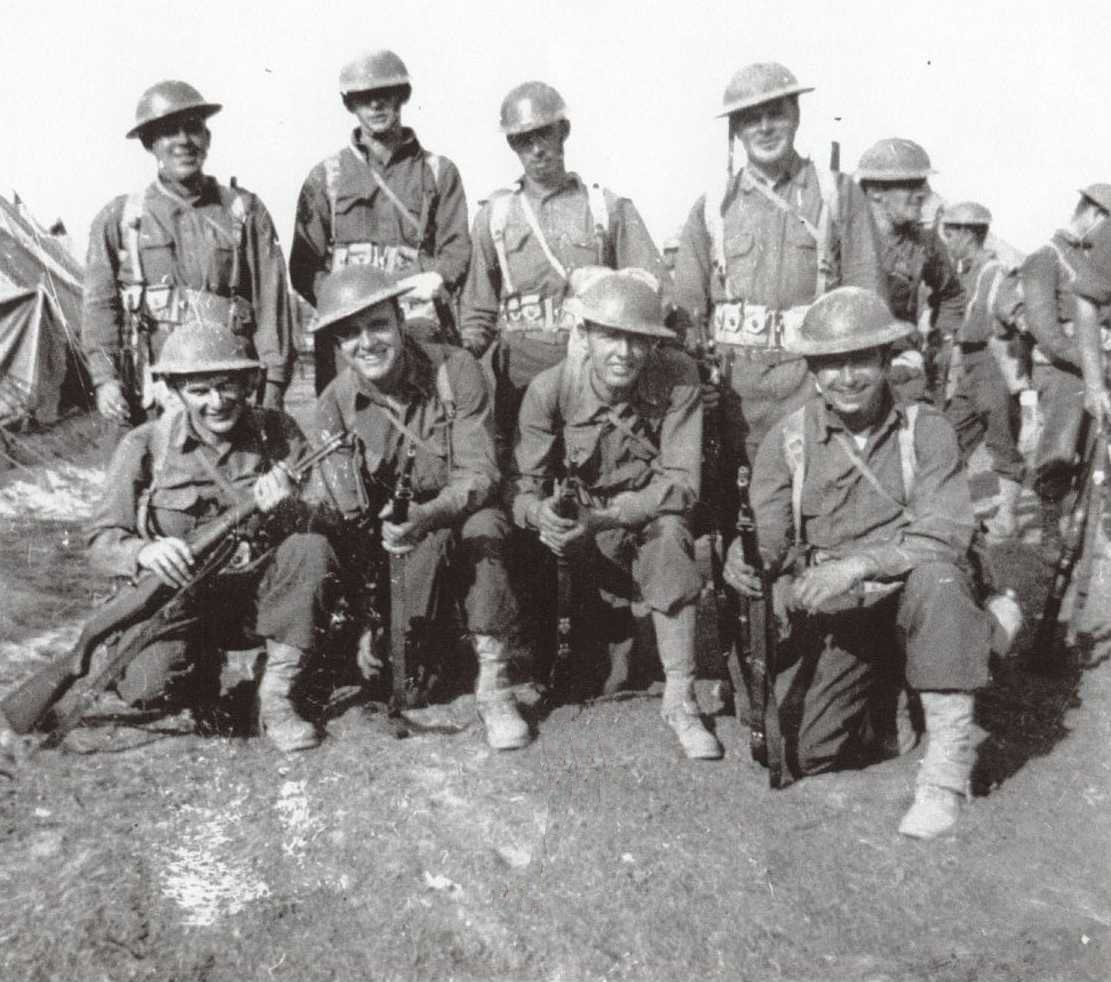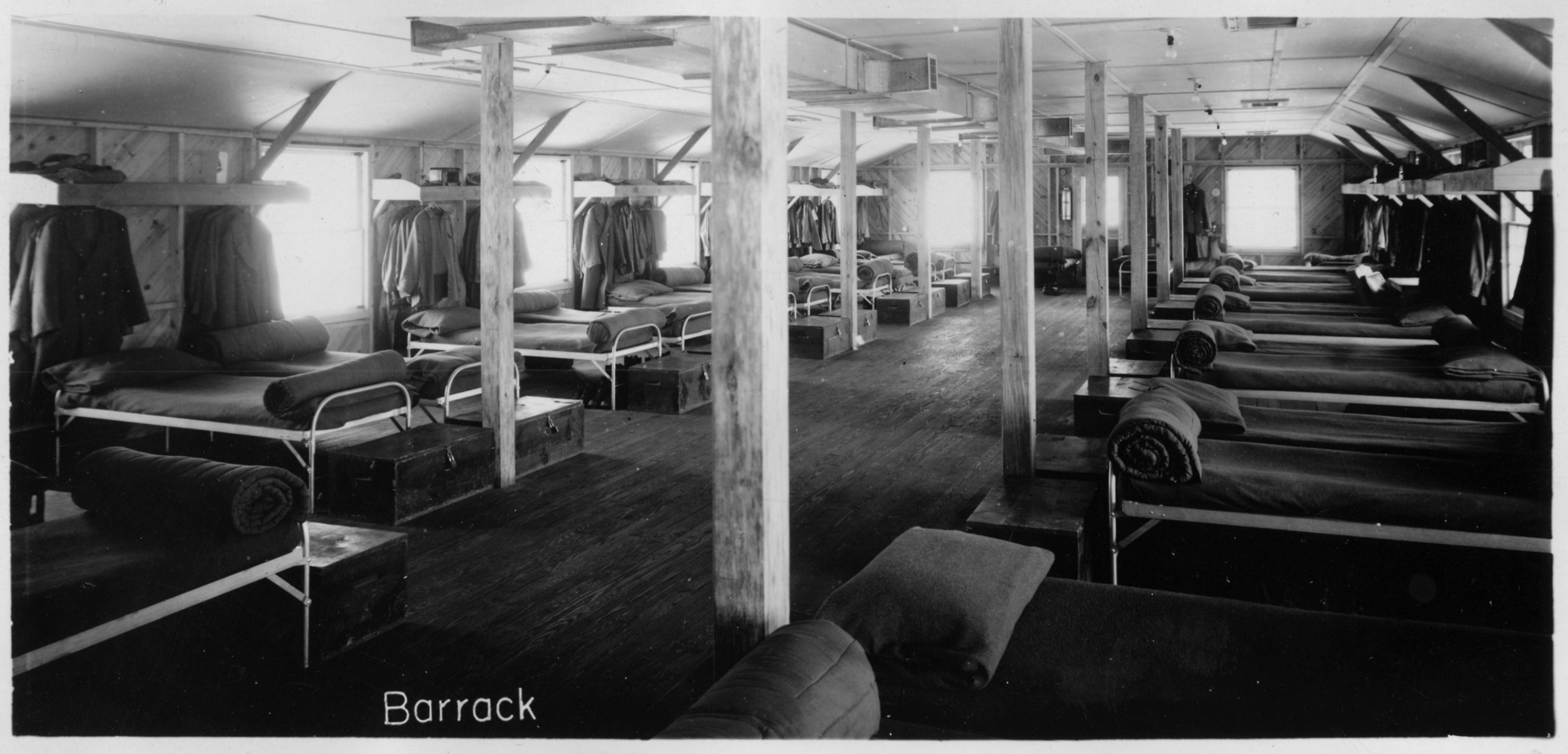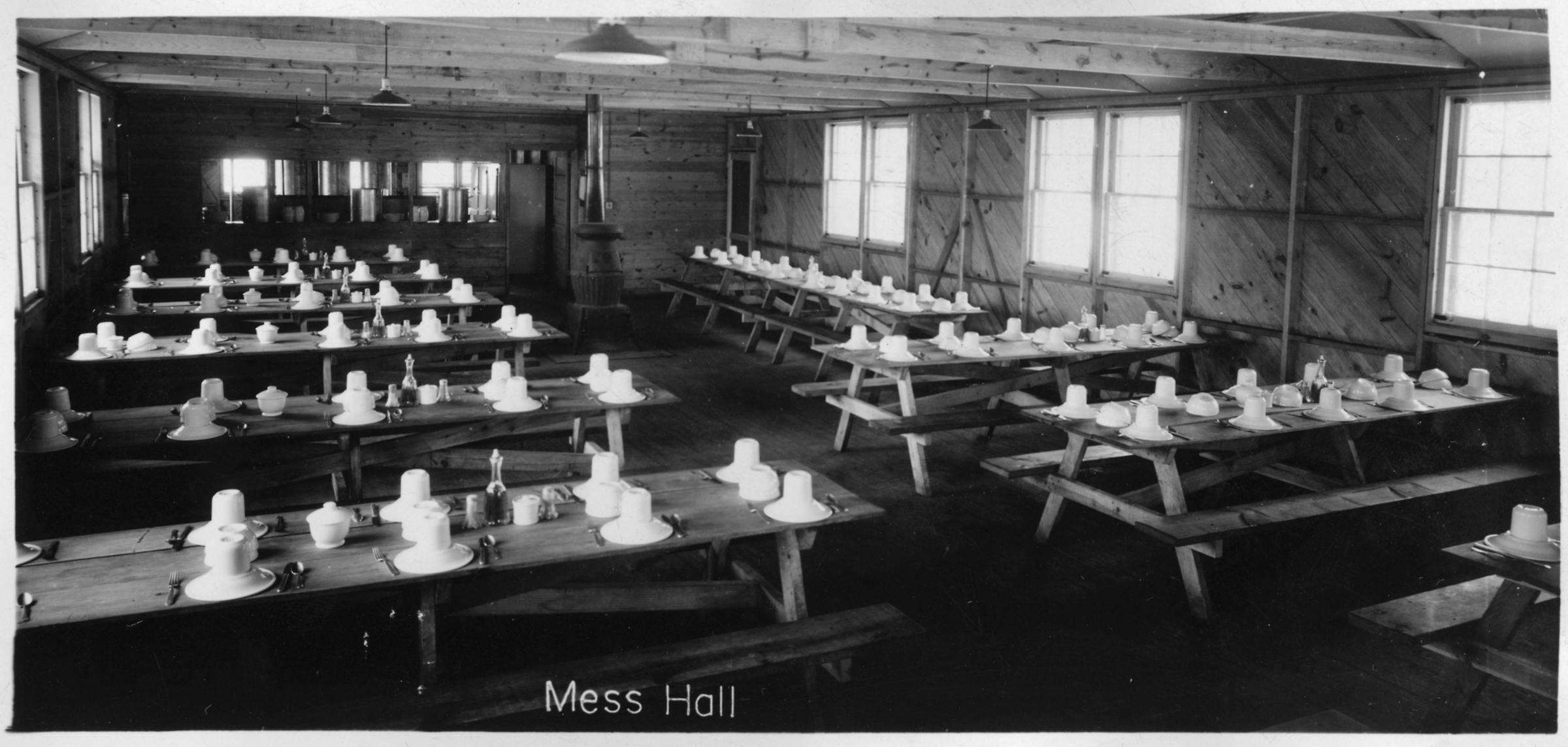Massachusett’s 182nd Infantry Regiment has a long and proud history, and is among the oldest combat regiments in the United States Army. The regiment’s history dates back to 1636, when it was called the North Regiment. Prior to World War II, it saw combat in the Revolutionary War, the War of 1812, the Civil War, and World War I. In the years leading up to the war, the 182nd Infantry was attached to the 26th “Yankee” Division. As a part of the Massachusetts National Guard, the Yankee Division operated with a smaller number of soldiers than their normal wartime complement. Soldiers drilled regularly, but as a National Guard unit, the 182nd was not regular Army – the soldiers did not serve full time. They drilled twice monthly, and additionally had 15 days of field training per year.
The basic hierarchy of Army units at the time was Division > Regiment > Battalion > Company. The Company was further divided into platoons and those were broken up into squads. In the years before World War II, Company G of the 182nd Infantry was a rather small unit, as can been seen in Photo #1, taken in 1939. The unit was designated “G” in 1841, and in the 1930’s it drilled in Woburn, MA.
With World War II raging across the globe by 1939, the United States took steps to rebuild its small, outdated military. A draft was instituted, and in the spring of 1941, hundreds of new soldiers joined the 182nd Infantry. The Company G unit photo (Photo #2), taken in 1941, shows the dramatic increase in the size of the unit, when compared to the Photo #1, taken 2 years earlier. At full strength, Company G numbered about 200 soldiers. The regiment’s report for the period 16 January 1941 – 11 November 1942 (read here) details the number of soldiers in the regiment at the beginning of each month, and shows the rapid growth of the 182nd due to the draft. In January 1941, the regiment had a total of 1259 men. By the end of April 1941, after the draft, the 182nd had 2611 men. When it deployed for war in January 1942, it left the United States with 3366 men.
In addition to the influx of new soldiers, the unit was also federalized, meaning that it was now on active duty, with the men serving full time, instead of drilling periodically. The federalized unit was assigned to Camp Edwards, on Cape Cod (see Photo #3). The grounds of the base (see Google Map here), along with nearby undeveloped woodland, proved ideal for training and field exercises needed for basic training of new draftees. The men of the 182nd spent many a night camping in the field on the grounds of Camp Edwards, learning about the life of a soldier.
The new men were immunized against various diseases, and began basic training. They were drilled on Army formality, tested for IQ, and qualified in the handling and shooting of weapons. They received new uniforms, but military equipment was in short supply, as the American war industry was not yet running at full speed. They were initially outfitted with outdated World War I “doughboy” helmets, and older, bolt-action Springfield rifles. In some cases, there were not even enough of these rifles to go around, and the men had to drill with wooden dummy rifles. Photo #4 shows men from Company G on a field exercise at some point during 1941.
The infrastructure at Camp Edwards was not equipped to handle the massive swell of soldiers inducted in the 1941 draft. New barracks and supporting buildings were rapidly constructed, and the size of the base grew dramatically. Soldiers of the 182nd lived in wooden barracks (see Photo #5). The men of Company G had a stray kitten in their barracks that they named after themselves: “Draftee.” It liked to curl up with the soldiers in their bunks on cold nights. Soldiers of the 182nd took their meals in the mess hall when not out in the field. Photo #6 shows a typical mess hall at Camp Edwards.
The new draftees spent much of their time in the field. Exercises were held on the grounds of Camp Edwards, as well as other military bases in New England. In the fall of 1941, the 182nd Infantry traveled south to take part in a huge series of war games known as “The Carolina Maneuvers.” Several hundred thousand soldiers participated in this massive pretend war, while the real World War II raged on across the globe. Time Magazine covered the war games in a series of articles, which can be read here and here. Ironically, the second lighthearted article was published on 8 December 1941 – a day after the Japanese attack on Pearl Harbor.
The trip to the Carolinas was expected to be a final stop for many of the soldiers of the 182nd, as their terms of service were scheduled to end around 7 December 1941. The unit arrived home at Camp Edwards on 6 December, and had a night of excitement before their lives changed forever.
Next Chapter: Reinforcements to a Desperate Fight






